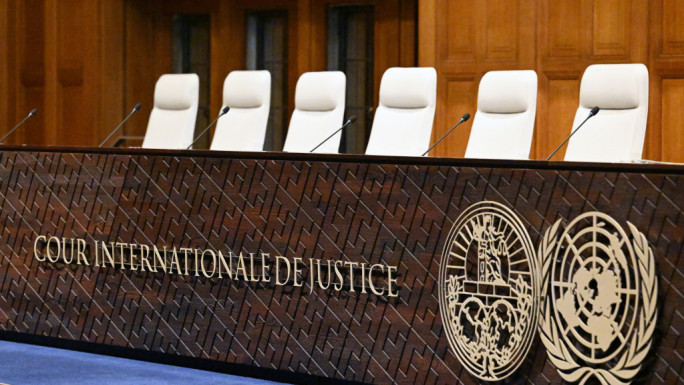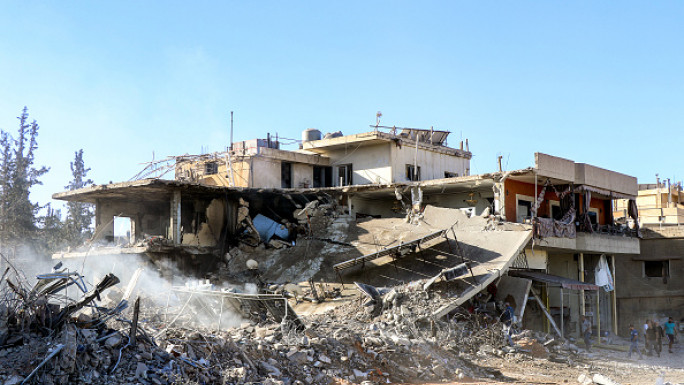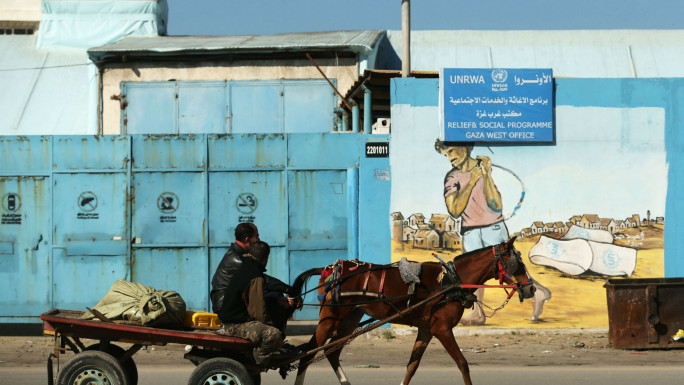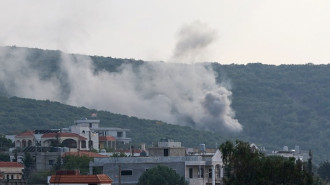Satellite images reveal the scale of Syria's devastation
Mass graves, deserted markets and whole neighbourhoods pounded to rubble: it is hard to illustrate the immense scale of the destruction Syria has suffered in four years of war. A new UN report seeks to tell the story in a new way, using images from the air.
The report uses aerial photos to highlight the destruction of schools and hospitals, indiscriminate barrel bomb attacks on civilian areas, and the scale of internally displaced and refugee populations. It also shows the extent of damage done by attacks on some of the Middle East's most valuable historical sites.
| Deserted urban markets are now common in Syria |
One before-and-after sequence in the report shows the Cardamomo market in Deir Ezzor. In 2010, the street market was full of stalls, a crowd of shoppers and cars. By mid-2013, the street was empty.
"Such deserted urban market areas are now common throughout many Syrian cities as normal civilian life has long since ceased to exist," said the report.
In another slide, two images of the same road junction near Jisr al-Shughur, Idlib, show that 74 new graves were dug in just three months in late 2011.
The UN images, which were provided by DigitalGlobe, have been used extensively to document attacks on civilians and on civilian infrastructure. One of the earliest images showed an oil pipeline on fire near Homs in February 2012. That was the start of a regime seige that soon deprived civilians in the city of essential goods and became a key event in the slide towards all-out civil war.
The UN Commission of Inquiry used satellite images to document mass graves linked to massacres of civilians in multiple towns of northern Syria. Experts matched videos of bombings and other posts from social media with evidence of damage visible in satellite images. In late November 2012 the images showed the bombing of a camp for internally displaced persons, waiting to cross the border into Turkey, was documented at Bab-al Hawa. Impact craters are clearly visible among the tents where civilians were sheltering.
By the summer of 2014 UNOSAT documented more than 30,000 destroyed or damaged buildings.
As Islamic State (IS, also known as ISIS) took over much of northern Syria last year, the UN began documenting damage to cultural sites. Syria hosts some of the most important historical sites in the Levant, from unique Assyrian architecture to centuries-old churches and important Islamic shrines. IS has destroyed a number of mausoleums dedicated to Muslim holy men, because it considers them un-Islamic.
 |
| Pictures from February 2013 (above) and October of the same year (below) show damage to the Uwais al-Qarani and Ammar Bin Yasser shrines in Raqqa [DigitalGlobe] |
 |
The UN study found that 290 cultural heritage locations had been damaged over the last three years. Of these 24 were destroyed entirely and 104 severely damaged. Aleppo was heavily impacted.
In the city of Ar Raqqa, the Shrine to Uwais Al-Qarani and Ammar Bin Yasser contain the remains of two martyrs from the battle of Siffin (657 AD). Unfortunately, these shrines, including the mosque housing each tomb and the minaret, were found to be severely damaged from explosives, most likely detonated on-site.
Over 220,000 Syrians have been reported killed and over one million wounded since fighting broke out following a largely peaceful uprising in 2011. Over 3.9 million Syrians have fled the country, while as many as 6.5 million are displaced inside Syria.
"By using such technologies, UNOSAT is able to generate timely and objective information, often over areas where no other impartial information sources exist," says the report. "The use of satellite imagery technology has now become the norm in humanitarian assistance provided by the United Nations, allowing for a more coordinated response and better targeted and timely assistance."
 |
| A satellite image shows Syrians stranded on the Turkish border after fleeing the Kurdish town of Kobane in October 2014 [DigitalGlobe] |





 Follow the Middle East's top stories in English at The New Arab on Google News
Follow the Middle East's top stories in English at The New Arab on Google News

![Algeciras port [Getty]](/sites/default/files/styles/image_330x185/public/75377010.jpeg?h=327453ef&itok=KfCFUEza)
